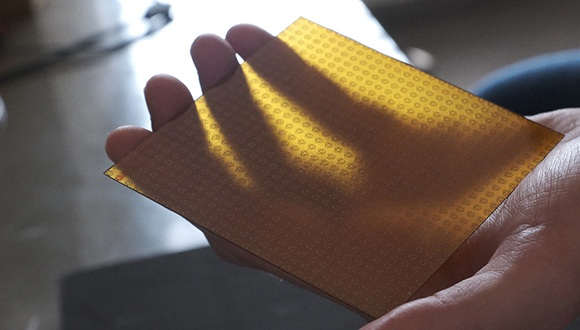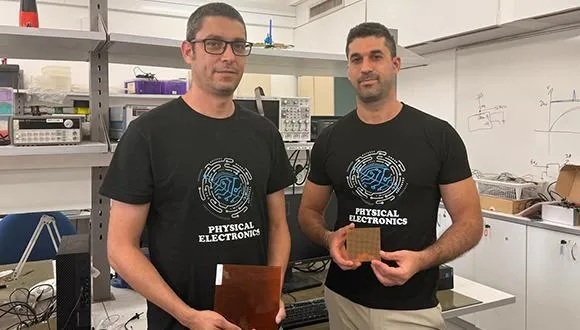07.08.2025
The ability to control how light and radio waves propagate, bend, and polarize is a basic part of how we send and receive signals and gather information from our surroundings. Thin "metasurfaces" that let us control these waves are important for developing advanced technologies like compact antennas, smart sensors, and flat lenses. In the future, metasurfaces could help lead breakthroughs in areas like fast communication (5G, 6G), medical devices, active camouflage, and optical computing thanks to their flexibility and ability to work within complex systems while saving space and energy.
A new study from Tel Aviv University and Rafael presents a fresh approach to designing unique surfaces where the electric and magnetic currents created in the structure are closely linked. For the first time, the researchers built and measured a periodic structure made of wires shaped like topological knots, confirming their theoretical predictions about how such structures behave.
The researchers explain that the importance of their study lies in how it connects simple geometric properties (called topological properties) with how the structure reacts to electromagnetic waves. This allows for easier design rules that don’t require complicated calculations.
The study was performed by Nadav Goshen, a PhD student at Tel Aviv University, under the guidance of Dr. Yarden Mazor from the School of Electrical and Computer Engineering. It was partly funded by Rafael's academic research collaboration fund. The findings were published in the respected journal Science Advances.
In the paper, the researchers explain that metasurfaces are 2D or 3D structures made of small repeating units, each smaller than the wavelength of the waves they interact with. In this case, the units are loops of wire shaped like toroidal knots—wires wrapped around an imaginary ring several times. These wire shapes have a special "chiral" structure, meaning they’re not the same as their mirror image (like your left and right hands). This feature lets the electric and magnetic reactions of each particle be coupled, which then affects how the whole metasurface behaves. (An example of such a surface is shown in the diagram on the right, produced using NanoDimension’s hybrid printing technology.)
Dr. Mazor says that to demonstrate how well the metasurface works, they used a specific type of knot (called a Trefoil knot). They created it using 3D printing that combined conductive silver for the wire and insulating plastic for mechanical support. In the Trefoil-based metasurface, they showed strong control over the wave’s polarization as a function of frequency, while almost completely preventing wave reflections. This was proven through both measurements and computer simulations. They also created a simpler, “flat” version using printed circuit board (PCB) technology, with the same topological features. Even with the altered shape, the basic effect remained, proving that the key behavior comes from the topology, not just the exact geometry.
Dr. Yehudit Hucherman-Fromer, Senior VP of R&D at Rafael, said: “Close collaboration between academia and industry is essential to lead true innovation and maintain technological superiority. At Rafael, we see great value in deep partnerships with research institutions - not just for mutual learning, but to grow breakthrough ideas into real-world solutions. Our long-term collaboration with Tel Aviv University is a great example, combining research excellence with real-world challenges, helping us build tomorrow’s defense technologies today.”

Metasurface which printed in 3D
In summary, the researchers say that one of the key contributions of this study is that they created a single-layer structure that achieves electric-magnetic coupling (instead of the usual multi-layer designs). They also showed that you can use simple design rules based on the particle’s properties. These findings could lead to advanced uses in optics, quantum technologies, and millimeter-wave communications.





